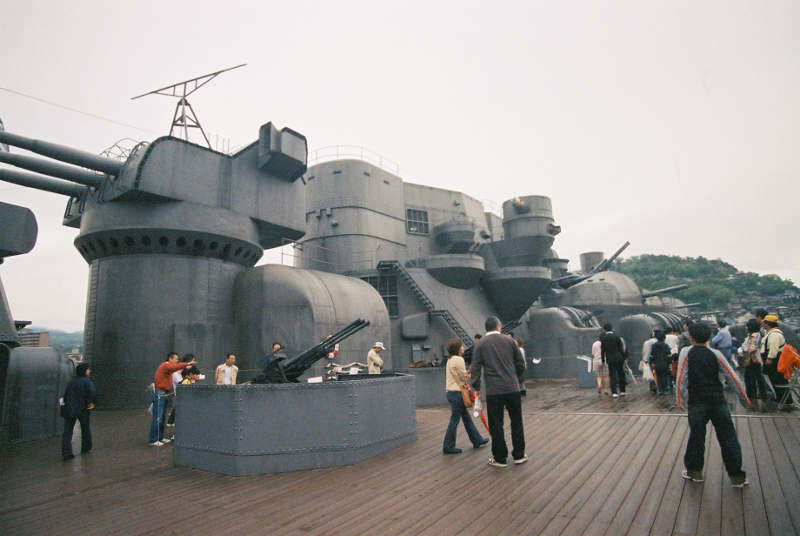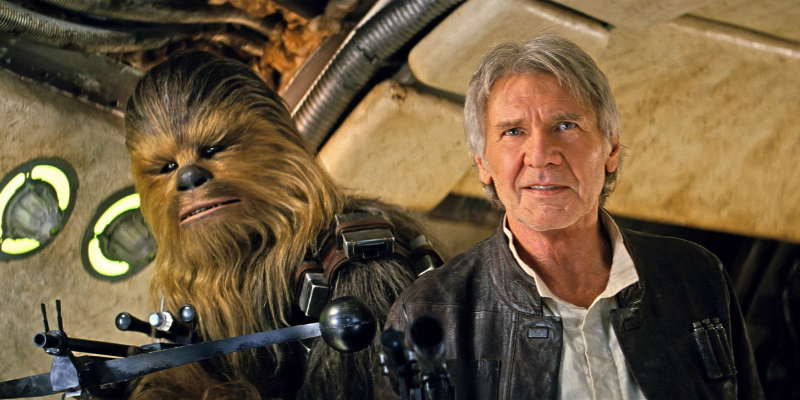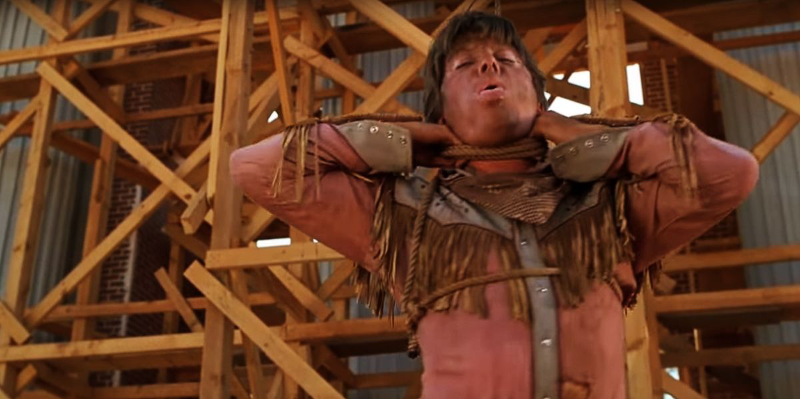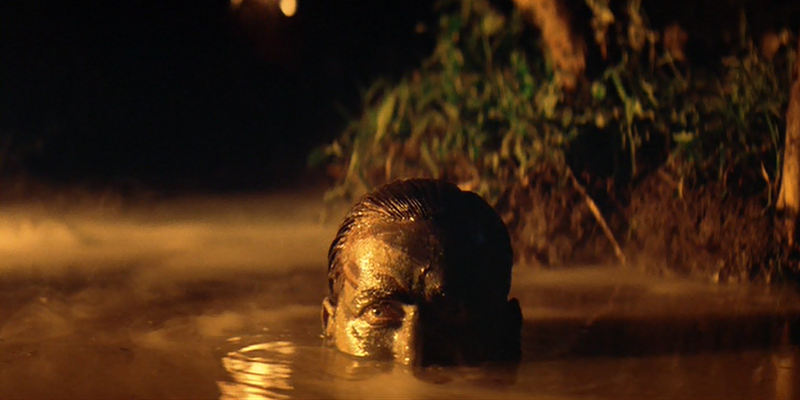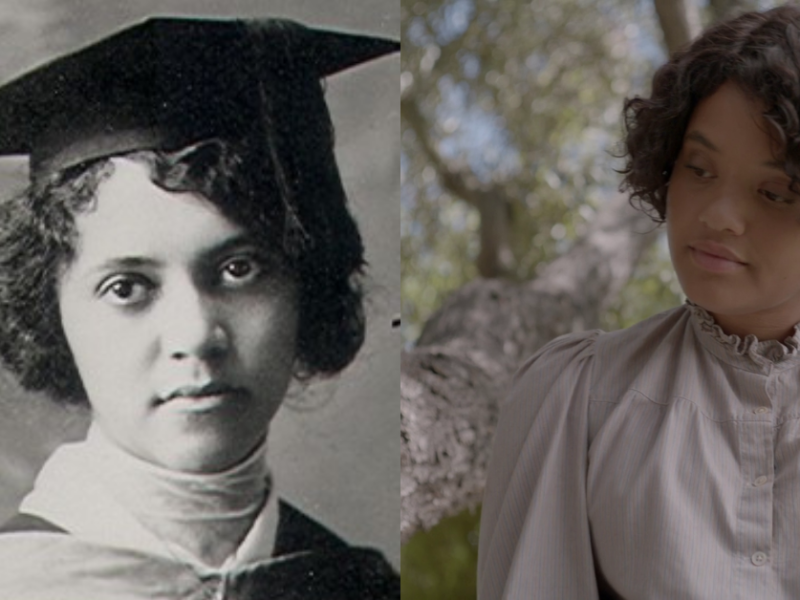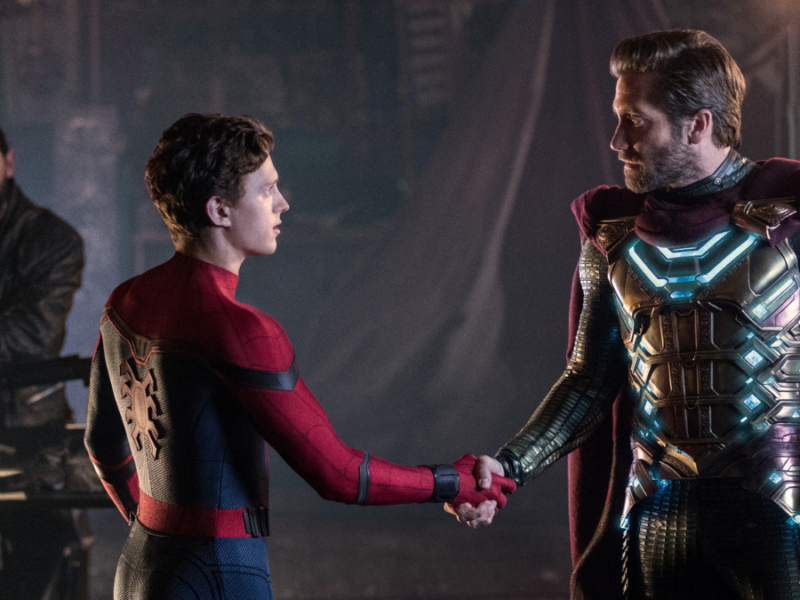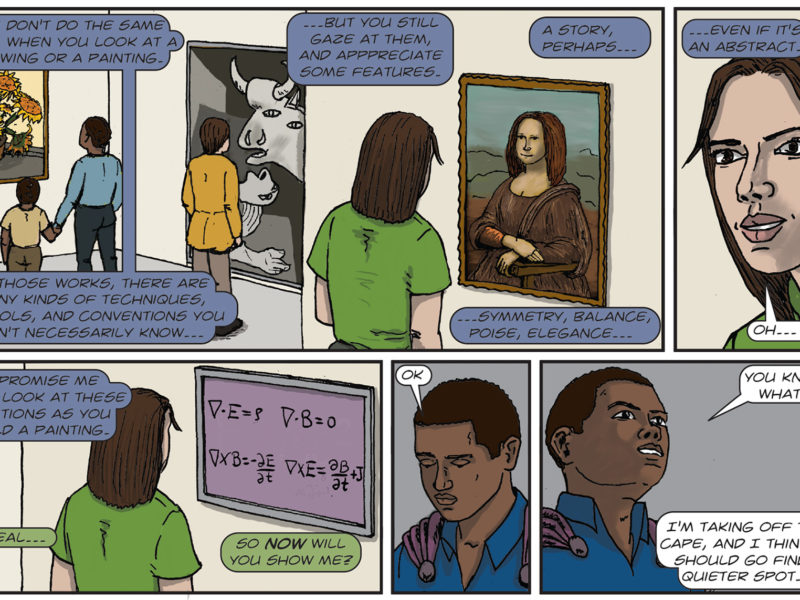To create cinematic action which is both believable and interesting, film producers often spend millions, but sometimes it is the actors that pay the real price for shooting a scene. Because of this, it is not uncommon for a big-budget blockbuster to be put behind schedule because of an injured lead actor. And while the danger of a shoot is apparent when watching the film itself, the most dangerous shoots are the ones that have just been poorly constructed. Conversely, the most exciting fight scenes are remarkably safe because of the way in which they are shot.
With all of these potential hazards, it’s really quite amazing that so many many films get made as safely as they do. But when things go wrong, they can go very wrong. This article details three particularly dangerous film shoots that reveal a great deal about what makes a film safe, what makes a film unsafe, and what producers and directors can learn from this.
3. Star Wars: The Force Awakens - A Hydraulic Door Almost Kills Harrison Ford
While filming The Force Awakens at Pinewood Studios in London, Harrison Ford was almost killed. In July this year, a court heard that a hydraulic door on board the Millennium Falcon had crushed Ford - almost to death - and broke several bones in his body. He was airlifted to hospital, and the shoot stopped for a long time as Foodles Production, the team responsible, were left twiddling their thumbs, contemplating the fact that they nearly killed one of Hollywood’s most beloved actors - on board his own spaceship, no less!What Can We Learn from This?
As a rack safety inspector in the UK, I once performed a warehouse safety inspection at Pinewood Studios in London where this incident took place. The warehouse was filled with equipment that didn't "stack" very well. After all, while there's a protocol for stacking things like lumber and metal pipes, there is no rulebook on how to stack James Bond and Star Wars props. Moreover, the fast-paced nature of the industry meant that items needed to be stored and/or retrieved as quickly as possible, without much notice. As a result, some items were stored in a haphazard manner.
Still, this injury did not happen because of pallet racking systems at Pinewood Studios', or because of the layout of the studio itself. Rather, this incident highlights the issue of safety on board shoots where fiction and reality become blurred - where fictional danger and real danger become confused. Fans of Star Wars know how unreliable the Falcon can be, not going into hyperdrive when Han (Harrison Ford) wants it to, for example, and how both Luke (Mark Hamill) and Rey (Daisy Ridley) describe the ship as worthless. As a result, it's important — for the sake of realism — to ensure that the ship looks rundown, a bit broken and, well, dangerous. The problem with making a ship look dangerous, though, is that sometimes it might well be.
The hydraulic door is a perfect example of this. The sensible thing to do would be to have a door which doesn't close with such force, and doesn't close when it senses objects in the way. Neither the 21st century nor the Star Wars universe are beyond creating a door which adheres to this pretty basic safety criteria, but a door like that has no place on the Falcon. Safety is not a characteristic that anyone would associate with either Han Solo or his ship.
The trick, of course, is to make a door which looks dangerous but is, in fact, very safe. On the set of The Force Awakens, this was evidently not the case.
2. Back to The Future: Part III — Michael J. Fox is Left Hanging...
The third and final Back to The Future takes place in the fictional hometown of Marty McFly (Michael J. Fox) in 1885 when the clock tower was being built. The clock is infamous, of course, because of its role in the first and second films, but also because it's where Fox was nearly hanged to death.
During the scene where Buford "Mad Dog" Tannen (Thomas F. Wilson) first meets Marty, he and his gang chase Marty with their horses before lassoing him up, dragging him through the streets, and smashing his limp body into some planks. As if all of that was not dangerous enough to film, Tannen then decides to hang Marty from the scaffolding of the clock-tower. Rather than giving way to a stunt double, Fox insisted on doing the shoot himself. He coughed and wildly flailed his legs about as he was strung up by a rope. Everybody was impressed with Fox’s realistic acting abilities — right up until he passed out, that is.
Fox explains this in his autobiography, but the really shocking thing is that he wasn't the only actor to have been almost choked to death during a big-budget Hollywood production. German actress and star of Tarantino's Inglorious Basterds, Diane Kruger, was strangled almost to the point of unconsciousness by Tarantino himself during her death scene.
What Can We Learn from This?
Don't choke your actors! After almost 100 years of worldwide cinema, surely film directors and producers have discovered a way to produce a choking scene without actually choking someone?
Indeed, they have. According to Kyle Rowling, director of the Sydney Stage Combat School, the trick is to give the person who is being strangled control of the scene. So while the strangler's grip on the strangled person's neck is loose and safe, the realism comes with the person being strangled, who grips with full force and pushes themselves into the other person's arms. That way, you have the "muscle tension," which Rowling argues is vital for the realism of a strangling scene, without the danger of being killed by a fellow actor (or your director, in Kruger's case).
1. Apocalypse Now — Francis Ford Coppola Shows Hollywood how not to make a Film
It is hard to know where to begin with danger during filming for Coppola’s Apocalypse Now. The film, now hailed as one of the greatest of all time, was once the bane of Coppola’s life. Almost everyone involved in the shoot was driven insane by a seemingly endless stream of bad luck, illness, and injury:
- Martin Sheen had a heart attack and was suffering from alcoholism during the shoot.
- Dennis Hopper was suffering from cocaine addiction, and would not shoot without his fix.
- Coppola himself suffered from an epileptic seizure and admitted to three suicide attempts during the shoot.
- Tropical diseases ran rampant among the cast and crew.
- A typhoon destroyed countless expensive sets, and could have killed several people.
- Dead bodies — rat and human — were purchased as props and strewn across the set.
- The crew’s passports were confiscated, and they were accused of murder (due to the aforementioned dead bodies).
What Can We Learn from This?
For a start, the film was ambitious — perhaps too ambitious. Directors go to great lengths to create realistic war films, but the original idea pitched by George Lucas was to shoot Apocalypse Now (a fictional film about the Vietnam War) in Vietnam itself while the actual Vietnam War was still going on. Fortunately, nobody was insane enough to finance such a dangerous — and arguably offensive — idea.
However, the idea they eventually decided on was only slightly less ridiculous, and still fraught with danger. The film was shot in the Philippines, a mere one year after the Vietnam War ended, while President Ferdinand Marcos was still heavily embroiled in military conflict with the Moro National Liberation Front. Rather than making the film in the war-zone where the film was set, they instead opted to make the film a stone’s throw away from a different war-zone. As a result, the Philippine government often took back the military helicopters they loaned to the film, to fight an actual war.
The sensible thing would have been to wait. As of 2016, Vietnam — and many other surrounding countries with similar landscapes — are no longer at war. Today, shooting Apocalypse Now in Vietnam would be a much safer ordeal. Still, if waiting was not an option, the very least Coppola could have done would have been to pick a different cast. Sheen, Hopper, and Brando were all a danger to themselves, and to the production of the film.
The dead bodies, barely visible in the final cut of the film, could have easily have been dropped from the shoot. In turn, this might well have reduced the number of tropical illnesses that were spreading among the cast and crew.
The problem with all these changes is that, had they been made, Apocalypse Now would have been a completely different film. The film that took its place may well have been better, but it would not be the film we know today. Some films are dangerous because of unnecessary additions or mistakes while filming. However, Apocalypse Now is one of those rare films that was dangerous by its very nature. The safest way to make Apocalypse Now would have been not to make it at all.
Racking Inspection Training, Safety Experts, and the Occasional Sacrifice: The Perfect Trilogy
If you’re the sort of actor or director who is literally willing to die for your art, then — obviously — you’re going to have to sacrifice at least some of your artistic vision for the sake of safe film-making. Tarantino's insistence on choking Diane Kruger is a perfect example of this. His claim was that it just would not look real enough if Kruger had faked it, but there is absolutely no safe way you can choke someone to the point of unconsciousness. To make that scene safe, Tarantino would have had to compromise, though we know that Tarantino is not known for doing so.
In response to all of this, I would point to a famous exchange between Dustin Hoffman and Laurence Olivier when filming Marathon Man. The story goes that Hoffman, in preparation for a scene in which his character had not slept for three days, decided to go three days without sleeping. Olivier, a Brit with no time for this “method acting” nonsense, suavely replied, “My dear boy, why don’t you just try acting?”
Actors are not the stars of documentaries about their own life. They are paid to pretend. While there is a lot to be said about being able to empathize with your character (Joaquin Phoenix was praised for his performance as Johnny Cash in Walk the Line precisely because it was actually him singing and playing guitar in the film), the line should be drawn at role preparation that is genuinely dangerous.
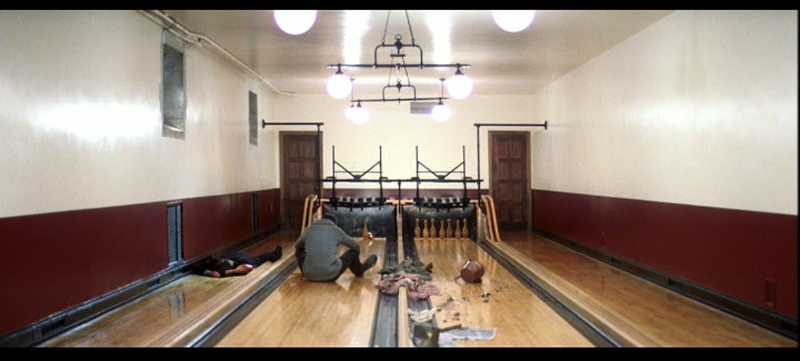
In the final scene of "There will be Blood," Daniel Day-Lewis tossed real bowling balls at his co-star, Paul Dano.
As a person whose entire career depends on ensuring the safety of workplaces, I realize that my opinion is going to be biased. But surely there’s a compromise between the slapstick style of the white Mickey Rooney playing an extremely inauthentic (and outright racist) Asian caricature in Breakfast at Tiffany’s, and Daniel Day-Lewis throwing actual bowling balls at his fellow actors in There Will Be Blood.
I think there is and because every good film fan loves a trilogy, I’m going to finish with three recommendations for safe film-making.
- Racking inspection training, forklift safety training, and safety training in general: Not all accidents happen to actors because of intense film-making. Sometimes, accidents happen to crewmembers because of carelessness. Neither the UK nor the US insists on racking inspection training or extra safety training for all employees; the HSE (the British government’s safety board) do suggest it.
There is a huge legal difference, of course. With film budgets often in the tens of millions of dollars, investing in racking inspection training for crewmembers who are going to be quickly stacking and retrieving a variety of different props seems like a relatively small price to pay. This should be the case for all areas of safety. If there is available safety training, then producers should make sure that crew members have it.
- Regular visits from safety experts: Some of this is law, but it’s law that is not always widely know. To use racking inspections (my particular field of safety) as an example, HSE gives clear guidance that businesses are to have their warehouse racking inspected at least once a year by a racking inspection expert. Does every warehouse owner in the UK do this? Probably not. After all, HSE recently conducted a survey where they discovered that 72% of business owners admitted that they found keeping up with health and safety law to be a burden.
This is bad for small businesses in the UK and established film-makers. After all, when a big-name director starts to make a big-budget film with lots of other big names attached to it, the courts are not going to look favorably on producers not being up to speed with a country’s safety laws. This, after all, is precisely how Harrison Ford was injured on the set of Star Wars: The Force Awakens. Regular visits from an independent safety inspector — someone who is able to disinterestedly inform producers and directors on what a given country’s safety laws are — are an absolute must for safe filmmaking. In an industry full of mad and magical creatives, independent safety inspectors are a sobering influence.
- The occasional sacrifice: Actors and film-makers need to be a little less Daniel Day-Lewis and a little more Laurence Olivier. Realism is all well and good, but actors are paid to act. So let them do their jobs!
Once this is followed, everyone involved in the process of making TV and movies can focus on making magic happen and not whether people will make it home safely at the end of the day.

